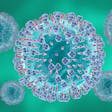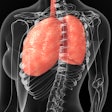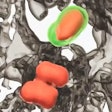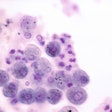
Researchers at National Jewish Health have shown that subtle changes in lung scarring over one year are associated with disease progression and survival in patients with a fibrotic interstitial lung disease. They completed the analysis using an artificial intelligence (AI)-based tool on CT scans to acquire an earlier, more objective way of identifying patients at highest risk of worsening disease.
The study, “One-Year Change in Quantitative Computed Tomography Is Associated with Meaningful Outcomes in Fibrotic Lung Disease,” was published in the American Journal of Respiratory and Critical Care Medicine.
“We found that even small increases in fibrosis over one year signal a higher risk of lung function decline and mortality,” said lead co-author Matthew Koslow, MD, in a news release. Dr. Koslow is a pulmonologist at National Jewish Health.
“For example, patients with a 5% or more increase in fibrosis score showed a greater than two-fold increased risk of death or lung transplant and steeper declines in lung function in the following year compared to patients with stable fibrosis scores,” Dr. Koslow said. “What is especially important is that these changes were strongest in patients with less severe disease at baseline — precisely the group where earlier intervention has the greatest potential to alter the course of disease.”
Fibrotic interstitial lung diseases, such as idiopathic pulmonary fibrosis (IPF), are a group of chronic, progressive disorders marked by lung scarring that make breathing increasingly difficult. Current tools for predicting progression rely on symptoms, lung function tests and radiologist interpretation of high-resolution CT scans — each of which can be limited by subjectivity or variability, especially when evaluating changes over time.
Researchers in the study used a deep learning method, developed by the Quantitative Imaging Laboratory at National Jewish Health, called data-driven textural analysis (DTA). The computer-based imaging tool provided a precise measurement of the extent of lung fibrosis on CT scans.
The group found that increases in DTA fibrosis scores over one year were strongly associated with subsequent lung function decline and a higher risk of death or lung transplant. It validated study results using data from the Pulmonary Fibrosis Foundation Patient Registry, which underscored the generalizability of the findings.
“This work demonstrates how quantitative imaging and robust statistical modeling can uncover meaningful patterns in disease progression,” said co-first author David Baraghoshi, PhD, biostatistician at National Jewish Health. “By analyzing changes in fibrosis scores over time and linking them to future outcomes, we were able to show that imaging data can serve as a powerful marker of clinical trajectory.”
Researchers said these insights could have major implications for clinical trials and patient care. Quantitative CT analysis may serve as a meaningful trial endpoint, a tool for selecting patients at highest risk and a guide for treatment decisions in real-world practice.























